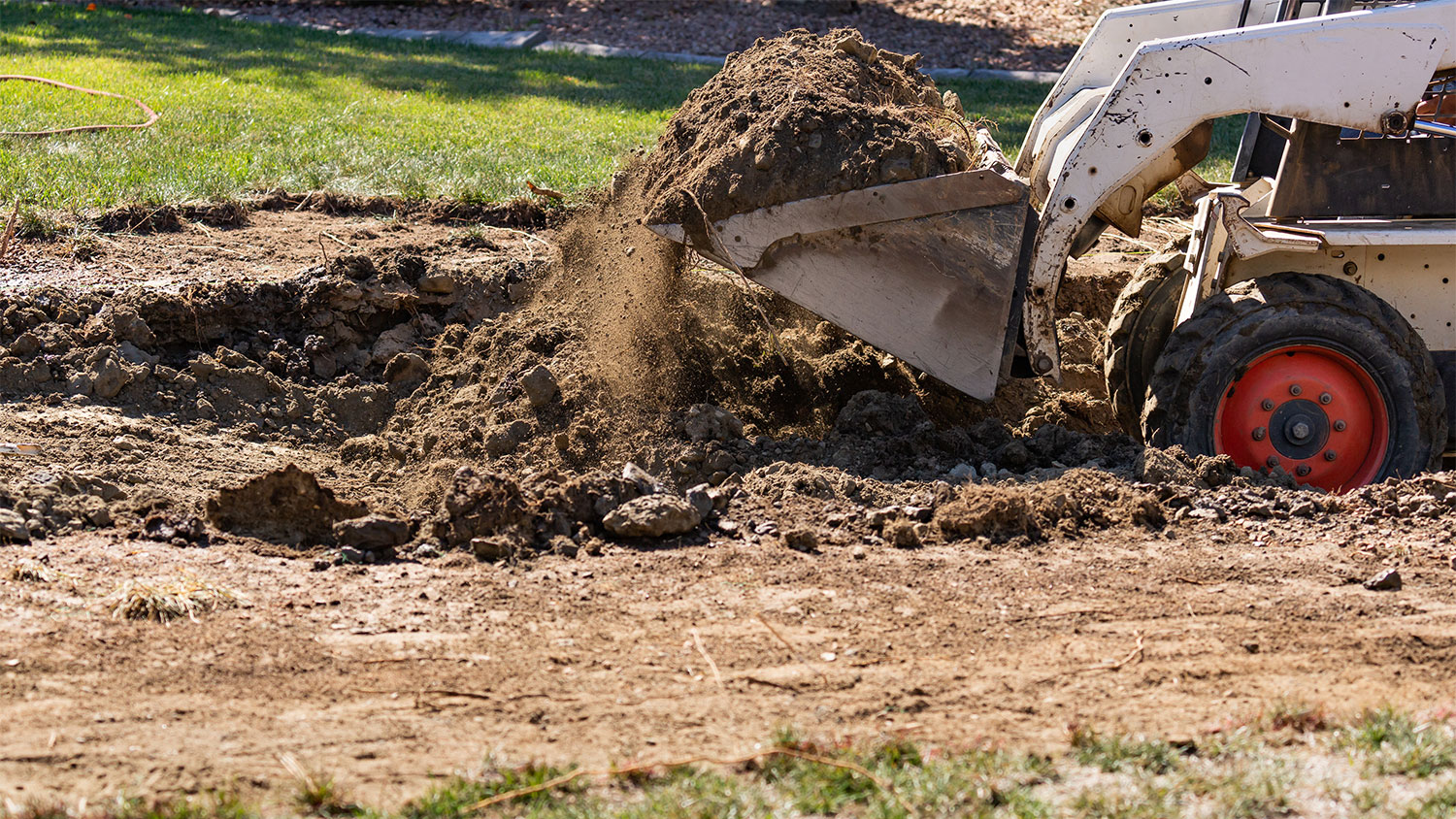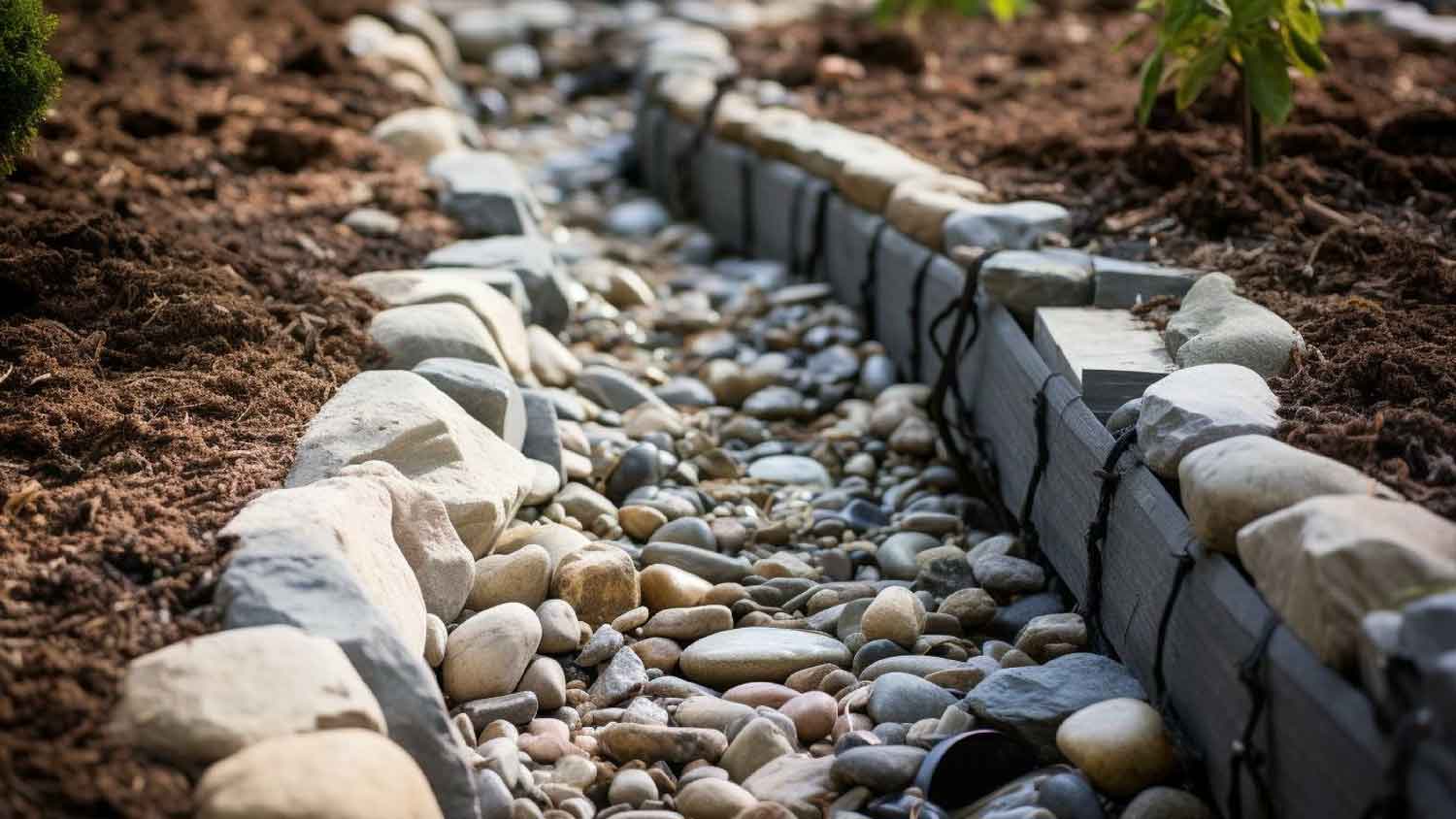
Discover how much trees cost to plant, exploring how factors like size, quantity, materials, and labor affect the total cost.
Landscape curbing costs an average of $1,453. You could pay as little as $323 if you just want a basic border around a small tree or as much as $4,500 if your project involves high-end materials lining large walkways or garden beds.


On average, landscape curbing costs between $781 and $2,163, with most homeowners spending an average of $1,453.
If you need to level the yard beforehand, budget an extra $1,000 to $3,300 for the project.
Concrete blocks are the most cost-effective, ranging from $2 to $3 per square foot for materials compared to $9 to $18 per square foot for poured concrete.
This article was created using automation technology and thoroughly fact-checked and edited by HomeAdvisor Editor Ryan Noonan.
Homeowners spend an average of $1,453 on landscape curbing, and most projects fall between the average range of $781 and $2,163. Costs vary widely depending on material choice, site prep work, labor rates, project size, and design type. Budgeting ahead and bringing in a landscaping pro will keep surprises to a minimum.
Your landscape curbing cost is determined by a variety of factors. Here’s a closer look at how your total breaks down.
Project size is the biggest cost driver—every extra linear foot adds to your total.
| Project Size in Linear Ft. | Average Installation Cost |
|---|---|
| 10 | $180 |
| 30 | $540 |
| 50 | $900 |
| 75 | $1,350 |
| 100 | $1,800 |
Brick or concrete block edging runs $2 to $3 per square foot for materials, plus $5 to $10 for labor and installation. Premium brands or extra reinforcement push the total higher. Block edging installs fast and costs less upfront than poured concrete, but individual pieces can shift over time and need more upkeep.
Poured concrete edging costs $9 to $18 per square foot, and the price is driven by project size and complexity. You’ll pay more upfront, but poured concrete is hard-wearing and low-maintenance—it won’t rot, warp, or separate, and small chips are easy to fix.
Your yard’s terrain also affects curbing costs. Steep slopes or hills require extra digging and preparation work, which increases labor fees. You may also have to budget for the cost to level the yard, which ranges from $1,000 to $3,300.
Curb cutting—the process of installing a ramp or "apron" that connects a home's driveway to a public road—costs between $2 and $10 per square foot. Specific apron costs can vary based on the driveway's size and the material used.
Steep or uneven terrain means more digging and grading, plus possible drainage work, all of which raise labor costs.
Curves and turns add prep time and often require special cutting tools, raising labor costs. Intricate shapes can also limit material choices or push you toward pricier options. If your design is complex, consider budgeting for a landscape designer.
Most local general contractors or landscape curbing pros quote this project by the linear foot, though some bill by the hour.
While most homeowners pay about $1,453 for landscape curbing, here’s what you could pay based on your location.
| City | Cost |
|---|---|
| Atlanta | $900–$1,800 |
| Boston | $1,500–$4,100 |
| Chicago | $900–$3,200 |
| Dallas | $750–$1,600 |
| Denver | $954–$1,804 |
| Detroit | $1,099–$2,900 |
| Minneapolis | $960–$2,200 |
| New York | $1,300–$3,100 |
| San Francisco | $730–$1,400 |
| Seattle | $600–$1,100 |
| Tampa, FL | $660–$1,400 |
While you’re tackling landscape curbing, you may want to complete a few other landscaping projects at the same time. Consider the following:
Delivering and installing mulch costs: $100–$350
Install outdoor lighting costs: $3,000–$6,000
Installing flower beds cost: $1,000–$3,000
Installing a paver patio cost: $2,400–$7,000
Leveling land cost: $1,000–$3,300
Concrete isn’t the only option—you can also edge with brick, steel, stone, granite, or wood, each with its own price point, look, and installation effort.
| Material | Cost Range |
|---|---|
| Belgian block | $9 to $11 per foot |
| Brick block | $2–3 per sq. ft. |
| Steel | $2.50–$4.50 per sq. ft. |
| Stone | $12–$40 per sq. ft. |
| Granite | $20–$33 per sq. ft. |
| Wood | $12–$50 per 2.5–4 ft. section |
Brick blocks cost $2 to $3 per square foot. They are affordable, durable, easy to install, and can last decades. You can enhance the appearance of your landscape edging by choosing different colored or textured bricks.
Steel edging costs $2.50 to $4.50 per square foot. It's long-lasting and durable, easy to install, and fairly unobtrusive. It's impenetrable, so it won't absorb water and isn't likely to rot, warp, or grow mold.
Most people pay between $12 and $40 for stone landscape curbing. More common and softer stones, like limestone and natural rocks, are readily available at the lower end. Bluestone, quartzite, and slate are popular but costly options at the higher end.
Granite landscape curbing costs an average of $20 to $33 per square foot. Granite curbing costs more because of its high-end, natural look. It's also incredibly durable, lasting for decades with no maintenance. Granite landscape edging can lift the look of your outdoor space.
Wood landscape edging ranges from $12 to $50 per square foot. With pressure-treated pine and cedar at the low end and exotic hardwoods like Ipe and Brazilian cherry at the high end, wood is a costly but attractive option.
Wooden edging has a rustic yet luxurious look and feel that highlights your dedication to creating a truly exceptional space. Even exotic hardwoods need maintenance to keep them looking their best. Less costly woods like cedar and pine require sealing every three to five years to prevent insect damage and rot from setting in.
Landscape curbing may increase your home value depending on your location, design choices, and current market conditions. A well-landscaped yard is an important selling feature for many potential buyers and can increase property values by up to 20%.
High-quality landscape curbing enhances the curb appeal of your home and signals to buyers that the property is well-maintained. Opting for durable materials like concrete adds value, offering prospective homeowners a long-lasting, low-maintenance solution.
Landscape curbing costs vary significantly depending on the project size, materials, and labor fees. To keep your project budget-friendly, consider the following tips:
Choose simple precast concrete blocks instead of decorative or custom designs.
Compare quotes from multiple landscape companies to find the most cost-effective option.
Check local hardware stores for discounts or promotions on materials.
Combine the cost of landscape installation projects with curbing to make the most of labor fees.
No place is more important than your home, which is why HomeAdvisor connects homeowners with local pros to transform their houses into homes they love. To help homeowners prepare for their next project, HomeAdvisor provides readers with accurate cost data and follows strict editorial guidelines. We surveyed thousands of real customers about their project costs to develop the pricing data you see, so you can make the best decisions for you and your home. We pair this data with research from reputable sources, including the U.S. Bureau of Labor Statistics, academic journals, market studies, and interviews with industry experts—all to ensure our prices reflect real-world projects.
From average costs to expert advice, get all the answers you need to get your job done.

Discover how much trees cost to plant, exploring how factors like size, quantity, materials, and labor affect the total cost.

Learn who to hire to regrade your yard. Compare grading contractors vs landscapers, see the process, timelines, and average costs to plan confidently.

Wondering who to hire to fill in an uneven lawn? See if a landscaper or general contractor fits your project and learn what to expect before you book.

Curious who to hire for mulching? Compare mulching companies, landscapers, and tree services, plus DIY vs. pro costs, to choose the right help today.

How much river rock will your next landscaping project need? Find out with our river rock calculator.

How much topsoil do you really need for your project? Dig into this topsoil calculator to find out.